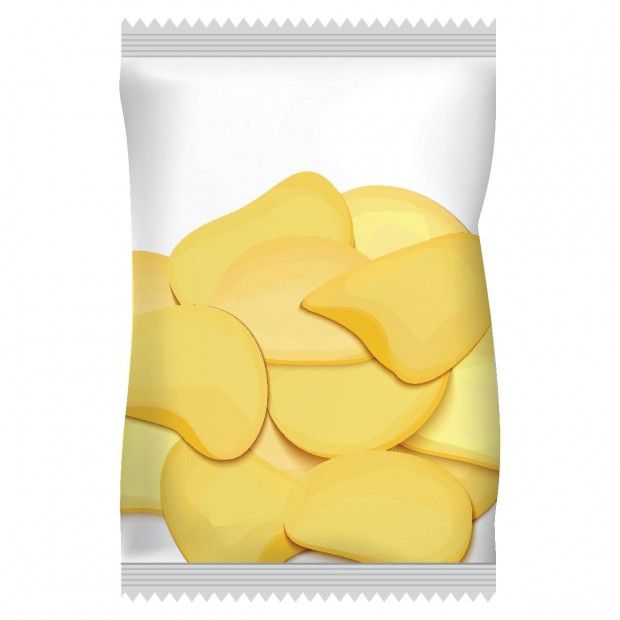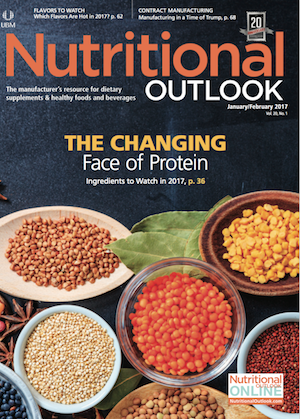Suing over Empty Space: Why Lawsuits over Slack Fill in Packaging Are Growing
That empty space in your chip bag or other product packages? It may serve a purpose, but that might not stop consumers from suing you.
Photo © Shutterstock.com/ARTvektor

Imagine this: you’re sitting on a warm beach, far from the cold, damp, dark days of winter. Craving a snack, you rustle around in your beach bag and grasp a puffy bag of potato chips. You tear the bag open, reach inside, and pop a big, salty crisp into your mouth. Ahhhhh, heaven! This moment is brought to you by slack-fill.
“Slack-what?” you may ask. Slack-fill. Read on, and enjoy that bag of chips.
The basics: Slack-fill refers to the difference between the capacity of a container and the volume of the product inside. In short, it is empty space. Think false walls inside a folding carton, an indented package bottom, “fillers” such as paper, or under-filled containers. All of these create slack-fill in a package.
In some cases, such as the potato chip example above, slack-fill is functional; that is, it serves a purpose by protecting the contents of the package from damage caused by unavoidable circumstances (e.g., settling or breakage). In other cases, slack-fill is non-functional space without a sufficient explanation.
Although slack-fill was largely the province of state enforcers for many years, we have seen a recent flurry of litigation alleging that non-functional slack-fill deceives consumers about the true contents of packaged goods. As such, all food and dietary supplement companies should be aware of the risks related to slack-fill.
Insert chip. Read on.
Federal Slack-Fill Law
In 1994, FDA issued its final slack-fill rule: 21 CFR § 100.100, “Misleading Containers,” Section 403(d) of the Federal Food, Drug, and Cosmetic Act.1 The rule provides that, when a container does not allow the consumer to fully view its contents, non-functional slack-fill is misleading. Thus, in order to analyze whether slack-fill is acceptable or potentially misleading under the rule, one must determine why the slack-fill exists in the first place.
Under the rule, slack-fill is considered non-functional unless it meets one of the following criteria:
- It exists for the protection of the contents of the package.
- It exists due to the requirements of the machines used to enclose the contents in the package.
- It is caused by unavoidable settling during shipping and handling
- It exists in order for the package to perform a specific function-e.g., when packaging plays a role in the preparation or consumption of a food-and when such function is inherent to the nature of the food and is clearly communicated to consumers.
- The product consists of a food packaged in a reusable container where the container is part of the presentation of the food and has value that is significant and independent of its function to hold the food. An example of this would be a gift product consisting of a food or foods combined with a container that is intended for further use after the food is consumed. Another example is durable commemorative or promotional packages.
- The manufacturer is unable to increase the fill level or reduce the package size because, for example, the size is necessary to accommodate food labeling requirements, discourage theft, or facilitate handling.2
Although there is no specific numerical value that could adequately describe the amount of non-functional slack-fill that would be considered significant, slack-fill in excess of that necessary to accomplish a particular function is generally considered non-functional slack-fill and may be misleading.3 In addition, FDA has specifically noted that net-weight statements do not provide protection against misleading fill.4
Recent Litigation Examples
In consumer class actions related to slack-fill, plaintiffs commonly allege that they were deceived by overly large packages containing too little of the advertised product. Like other consumer class actions, slack-fill class actions raise the potential for significant monetary exposure, as litigation is brought on behalf of all purchasers in a state or even nationwide.
Courts assessing consumer class actions assess whether, in the context of the product packaging and other market considerations, a “reasonable consumer” would likely be misled by the package. For example, in Fermin v. Pfizer, Inc., Case No. 15 CV 2133 (E.D.N.Y. Oct. 14, 2016), the court determined that packages of Advil did not deceive consumers because the label bore an unambiguous pill count. In a case involving lip balm, the court denied plaintiffs’ argument that packages were misleading. The plaintiffs had argued that the lip balm packages were misleading because a portion of the product was contained in an inaccessible section of the package and could not be reached unless it was dug out. The court determined that a reasonable consumer would not be misled because the packaging design was “commonplace” for lip balm products.5 Cases in which plaintiffs fail to allege that the slack-fill was non-functional and therefore misleading have also been dismissed.6
Other cases have survived the motion-to-dismiss phase. In In re: McCormick & Company, Inc. Pepper Products Marketing and Sales Practices Litigation, MDL Docket No. 2665, Misc. No. 15-1825 (D.D.C. Oct. 17, 2016), McCormick competitor Watkins Inc. alleged that under-filled, opaque pepper containers misled consumers about the relative amounts of pepper in the brands’ products. The court allowed the plaintiff’s Lanham Act challenge to proceed, finding that an accurate statement of weight did not necessarily correct a consumer’s misimpression of product quantity based on the size of a container.
Conclusion
Slack-fill is the latest entrant to the food class-action scene. As a result, most companies are taking a closer look at the claims they put on their product packages. As we have learned from the recent rise in slack-fill litigation, companies should not overlook the form of the packaging as a source of litigation risk.
Kristi Wolff is a partner in the Advertising and Food and Drug Law practice of Kelley Drye & Warren LLP, and Devon Winkles is an associate for Kelley Drye & Warren’s Advertising and Food and Drug Law practice.
Read more:
FTC Sues Prevagen Marketers for Making Unsubstantiated Claims
From Trump to the FTC: 2017 Dietary Supplement Regulatory Issues to Watch
References:
- The FDCA provides, “A food shall be deemed to be misbranded- (d) If its container is so made, formed, or filled as to be misleading.” 21 U.S.C. § 343.
- 21 CFR § 100.100(a). Separately, the Fair Packaging and Labeling Act provides FDA with authority to adopt regulations prevent the nonfunctional-slack-fill of packages. For purposes of the FPLA, a package is deemed to be non-functionally slack-filled if it is filled to substantially less than its capacity for reasons other than (A) protection of the contents of such package or (B) the requirements of machines used for enclosing the contents in such package. 15 U.S.C. 1453(c)(4). FDA has not expressly adopted slack-fill regulations under the FPLA. However, it based its regulation “on the FPLA definition for nonfunctional slack-fill but goes beyond it in ways that the agency… found to be appropriate.” 58 Fed. Reg. 2472 (Jan 6, 1993).
- 58 Fed. Reg. 64126 (Dec. 6, 1993).
- 58 Fed. Reg. 64128-64129 (Dec. 6, 1993) (“FDA finds that the presence of an accurate net weight statement does not eliminate the misbranding that occurs when a container is made, formed, or filled so as to be misleading.”)
- Ebner v. Fresh Inc., Case No. 13-CV-56644 (9th Cir. Mar. 17, 2016); see also Forouzesh v. Starbucks Corp., No. 16-CV-3830 (C.D. Cal. Aug. 19, 2016) (dismissing putative class action related to amount of ice vs. coffee in Starbucks iced coffee drinks).
- See Bautista v. CytoSport, Inc., Case No. 15-CV-9081 (S.D.N.Y. Dec. 12, 2016).

Prinova acquires Aplinova to further increase its footprint in Latin America
April 7th 2025Prinova has recently announced the acquisition of Brazilian ingredients distributor Aplinova, which is a provider of specialty ingredients for a range of market segments that include food, beverage, supplements, and personal care.

























